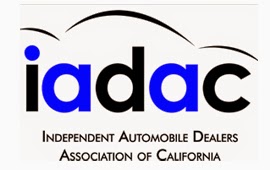A major highway infrastructure bill is now rolling around the Senate. After landing on July 29, the bipartisan bill, termed the America’s Transportation Infrastructure Act of 2019, the bill is now set for debate and has been termed the “largest highway legislation in history.” The bill has already been marked up with amendments and was approved unanimously by the Senate Committee on Environment and Public Works.
The bill would authorize $287 billion over a five-year period to maintain the nation’s roads and bridges. This would represent a 27% increase over what the FAST Act proposes. It would also aim to improve safety, streamline project delivery, and increase environmental protections. The main thrust of the bill would be to generate strong economic growth. The bill’s co-sponsors are Senators John Barrasso (R-WY), Tom Carper (D-DE), Shelley Moore Capito (R-WV), and Ben Cardin (D-MD).
The Industry Reacts
Considering infrastructure has been like a Capitol Hill hot potato in recent years, many industry advocacy groups were pleased to see some movement on the topic. The ATA came out strongly saying that the strength of the U.S. economy relies on sound roads and bridges. They also added that their organization plans on working with the Senate committee on a legislative package that includes long-term, sustainable funding.
Even the association for travel plaza and truck stop operators lent their voice to the debate, stating that the Senate Committee should expeditiously advance the proposal. They called the bill a step in the right direction and hope that it will enhance supply chain efficiencies and help the private sector take steps to innovate and improve their overall environmental footprint. The group also supports a grant program that would stimulate private investment in electric vehicle technology and alternative fueling and charging stations.
But will policymakers steer the grants towards objectives in a way that doesn’t create a high level of risk for those working on the problem? Time will tell. For now, transportation advocacy organizations are worried that the grant money may be funneled to public utilities, which will use the money to squeeze out private investment for EV and alternative fuel charging and fueling infrastructure.
Even more, industry insiders are hoping that a long-term solution sees the light of day. Many are hoping it passes by the fall. Still, some are worried that the next transportation bill will be done piecemeal, in short-term increments and program extensions. They argue that infrastructure funding needs to be predictable and stable so that state DOTs can focus on delivering projects for those within their states.
One of the positive developments in the bill is regarding the funding. Since 90% of the funding in the program goes directly to the states, the states then get to decide how they invest the money based on their particular need. And while some groups, such as the OOIDA, express a little wariness at a process that has produced little results in the past, they still support the overarching goal.
Business Groups Weigh In
The United States Chamber of Commerce released a statement stating that the new bill represents a 25% increase over current funding. They went on to state that this increase will create a vital bridge program that will address the major bridge deficiencies in America. They also expressed the desire to see a long-term funding solution enacted, rather than short-term stopgap measures. Even the Associated General Contractors of America have weighed in calling the bill a “critical first-step.”
Other American business groups states that robust funding increases the proposed for the national discretionary and formula grant programs for freight and highway projects. It would also significantly increase the amount of funding that would go toward port, rail, and intermodal projects.
Some of the key aspects of the bill that make it so desirable include the increases in the Nationally Significant Freight and Highway Projects (INFRA) program funding and the increases in the freight formula program funding. INFRA funding would jump by $5.5 billion over five years, which is a full $500 million more than what had been proposed in the FAST Act. The annual cap would jump by 30%.
Freight formula funding would increase to $8.5 billion over five years, which is nearly $2 billion more than what the FAST Act authorized. Many are calling these funding levels “unprecedented,” which is what has led some to call this bill the “largest in history.” Indeed, the proposed measure includes a substantial boost in funding. But it also includes some interesting improvements to broader transportation policy as it relates to federal regulation.
The most important aspect of the legislation is the part where the federal reviews and permitting for new transportation projects is significantly sped up and much of the red tape cut out. The bill also includes workforce development goals that aim to lure new workers into high-paying construction careers. Now, the question is, what will happen in the house? With the current federal highway bill set to expire on September 30, 2020, only time will tell what comes out of the deal.
The Justified EPA Study
In other news out of Washington D.C., the audit by the U.S. Environmental Protection Agency was validated by its independent Inspector General’s office. Remember back when the agency did glider vehicle testing and found that glider-kits put out a lot more emissions than new trucks? Well, there was a big back-and-forth battle regarding the outcome of that study, but now the independent Inspector General said the study complied with standard practices and that its outcome was not in doubt.
The original audit was brought on by Congressional requests from the summer of 2018. These requests cast doubt on glider vehicle testing conducted by the EPA in 2017. Since the Office of the Inspector General is an independent arm of the EPA funded solely by Congress, its audit was not subject to agency oversight.
The OIG ended up doing its own testing using the EPA’s National Vehicle and Fuel Emissions Laboratory. They also used the EPA’s own planning to make their determination. Since it was the testing methodology that was at the heart of the controversy, the OIG wanted to use the same testing type that the EPA originally used. The report in question was called the “Chassis Dynamometer Testing of Two Recent Model Year Heavy-Duty On-Highway Diesel Glider Vehicles.”
The controversy stemmed from a glider kit proposal loophole that would allow glider kit manufacturers a way to avoid EPA regulations that they find onerous. Almost every industry stakeholder, whether trucking advocacy organization or big fleet, came out against the measure. It also stems from the ongoing fights over the GHG/Fuel Efficiency Phase 2 rule. The rule required glider kits to meet the emission standards for the year the vehicle was assembled, rather than the year the engine within it was manufactured.
By July of the same year, a major glider kit manufacturer petitioned the EPA to repeal its previous findings. Then, by November, the EPA had done so. Still, that repeal is yet to become a final rule and is still just a proposal. Once a study by Tennessee Tech was discredited, the EPA’s justification for repealing their initial guidance unraveled.
The study determined that emissions from glider vehicles were significantly higher than emissions from newer model year vehicles, no matter what cycle they were purchased in. Yet, proponents of glider kits stated that Volvo Group had more influence over the study than they should have, with employees at the agency and certain aspects of the testing that were done without agency approval.
Yet, even the ATA has now come out in favor of the OIG ruling, saying in a public statement that the OIG report finally vindicated the original findings that truck OEMs did not unduly influence the EPA’s glider testing results. Many OEMs and trucking advocacy groups communicated and cooperated regarding the EPA’s testing.
The final OIG audit report came out stating that the EPA selected and tested the vehicles based on their given authority within the Clean Air Act. Standard EPA practices and relevant policies and procedures were used. The report went on to say that there was no evidence EPA staff deleted materials or completed steps of the study without consulting agency leadership ahead of time.
Another allegation that came from the request to remove the proposals was regarding the Office of Transportation and Air Quality Center Directory, who had been accused of ethics violations while serving as a federal employee. And finally, that there was no collusion between agency employees and OEMs they may currently or previously have worked for. While it seems this issue has been put to rest for now, it may come up again as the FMCSA, under guidance from the current administration, further rolls back regulations impacting several agencies. Will we see more changes to EPA rules or more studies challenged as rules of the past are revisited? Perhaps, but with a new election cycle coming up, it is likely most policymakers will be quite distracte
from Quick Transport Solutions Trucking Blog https://ift.tt/2qbbLuE



Sourced by Quik DMV - CADMV fleet registration services. Renew your registration online in only 10 minutes. No DMV visits, no lines, no phone mazes, and no appointments needed. Visit Quik, Click, Pay & Print your registration from home or any local print shop.





0 comments:
Post a Comment